Space Photos & Images from the 219th American Astronomical Society Meeting
Three Smallest Alien Planets Discovered
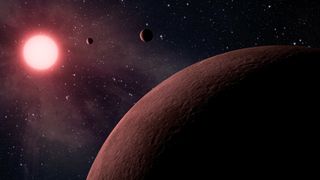
This artist's concept depicts the newfound planetary system KOI-961, which contains three alien planets smaller than Earth. The exoplanets circle their red-dwaf host star at very close distances, so they're likely too hot to host life.
KOI-961 and Its Three Known Planets
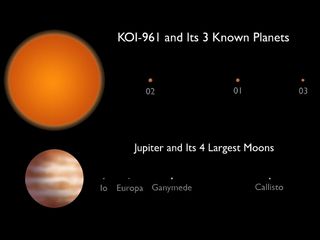
This artist's conception compares the KOI-961 planetary system to Jupiter and the largest four of its many moons. The KOI-961 planetary system hosts the three smallest planets known to orbit a star beyond our sun (called KOI-961.01, KOI-961.02 and KOI-961.03). Image released January 11, 2011.
Twin Sun Planet Kepler 35b
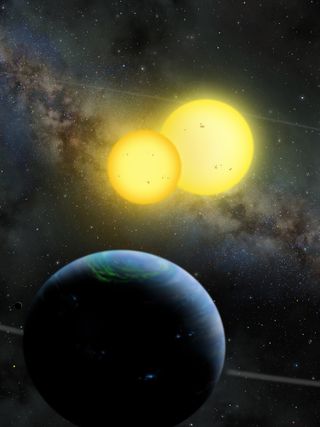
An artist's illustration of Kepler-35 b, a Saturn-size planet around a pair of sun-size stars, as envisioned by artist Lynette Cook. The discovery of Kepler-35b and another twin sun planet, Kepler-34 b, was announced Jan. 11, 2012 and represent a new class of circumbinary planets.
Alien Planets Outnumber Stars in the Milky Way
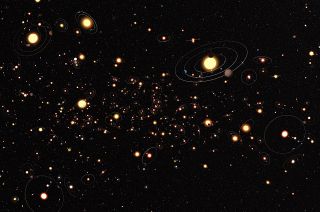
This artists’s concept gives an impression of how common planets are around the stars in the Milky Way. A six-year search that surveyed millions of stars using the microlensing technique concluded that planets around stars are the rule rather than the exception.
Smallest Alien Planets Comparison
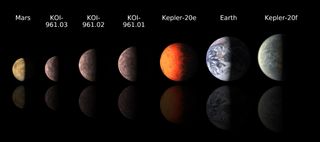
This chart compares the smallest known alien planets to Mars and Earth. Astronomers using data from NASA's Kepler space telescope announced the discovery of KOI-961.01, KOI-961.02 and KOI-961.03 on Jan. 11, 2012; the Kepler team announced Kepler-20e and Kepler-20f in December 2011.
Large Magellanic Cloud as Seen by Herschel and Spitzer
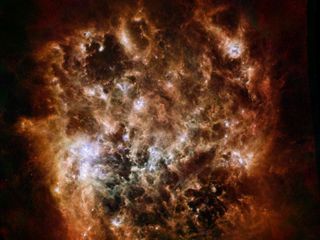
This new image shows the Large Magellanic Cloud galaxy in infrared light as seen by the Herschel Space Observatory and NASA’s Spitzer Space Telescope.
Hubble Solves Mystery on Source of Supernova in Nearby Galaxy
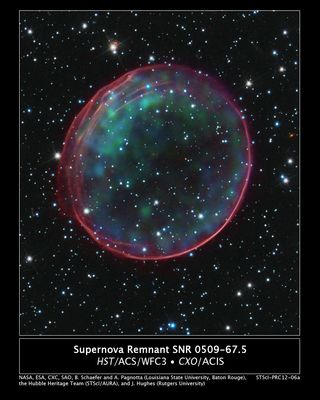
This image of Type Ia Supernova Remnant 0509-67.5 was made by combining data from two of NASA’s Great Observatories. The result shows soft green and blue hues of heated material from the X-ray data surrounded by the glowing pink optical shell, which shows the ambient gas being shocked by the expanding blast wave from the supernova.
Get the Space.com Newsletter
Breaking space news, the latest updates on rocket launches, skywatching events and more!
Twin Sun Planet Kepler 35b: Mark Garlick
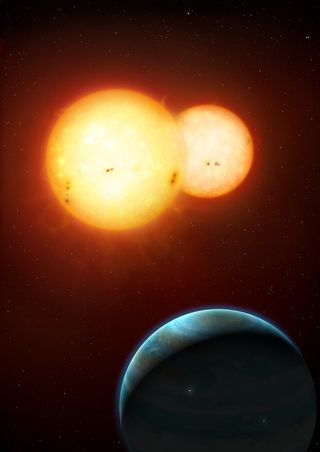
An artist's illustration of Kepler-35 b, a Saturn-size planet around a pair of sun-size stars, as envisioned by artist Mark A. Garlick. The discovery of Kepler-35b and another twin sun planet, Kepler-34 b, was announced Jan. 11, 2012 and represent a new class of circumbinary planets.
Supernova SNR 0509-67.5
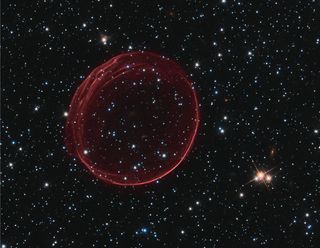
When this image, taken by the Hubble Space Telescope, appeared on the Astronomy Picture of the Day website, two Louisianna researchers realized it was exactly the information they needed to solve the mystery of the source of a special kind of supernova. The even distribution of gas and debris made it fairly easy to pinpoint the center and search for a companion star.
Stars Brewing in Cygnus X
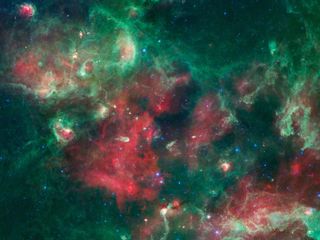
A bubbling cauldron of star birth, Cygnus X, is highlighted in this new image from NASA's Spitzer Space Telescope.
2004 Venus Transit of Sun
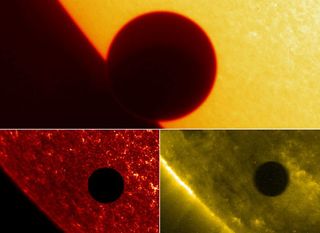
Astronomers are on the edge of their seats for the June 2012 transit of Venus across the face of the sun, according to scientists at the 219th American Astronomical Society meeting in Austin, Texas. The event last occurred in 2004 and won't happen again until 2117.
Here are three views of Venus' solar transit in 2004, taken by NASA's sun-observing TRACE spacecraft. The top image is in visible light; the view on bottom left is in the ultraviolet, and the one on bottom right is in the extreme ultraviolet.
Join our Space Forums to keep talking space on the latest missions, night sky and more! And if you have a news tip, correction or comment, let us know at: community@space.com.

Space.com is the premier source of space exploration, innovation and astronomy news, chronicling (and celebrating) humanity's ongoing expansion across the final frontier. Originally founded in 1999, Space.com is, and always has been, the passion of writers and editors who are space fans and also trained journalists. Our current news team consists of Editor-in-Chief Tariq Malik; Editor Hanneke Weitering, Senior Space Writer Mike Wall; Senior Writer Meghan Bartels; Senior Writer Chelsea Gohd, Senior Writer Tereza Pultarova and Staff Writer Alexander Cox, focusing on e-commerce. Senior Producer Steve Spaleta oversees our space videos, with Diana Whitcroft as our Social Media Editor.











